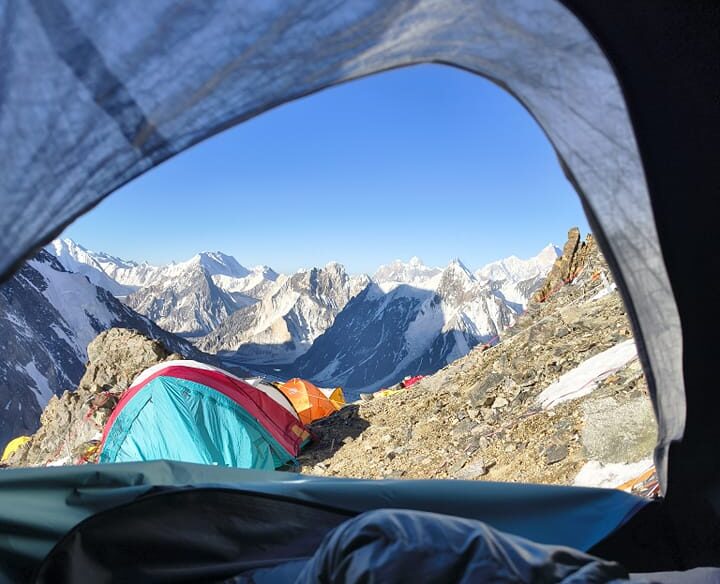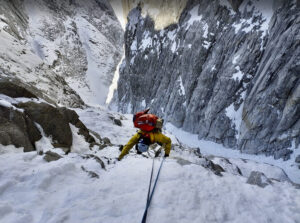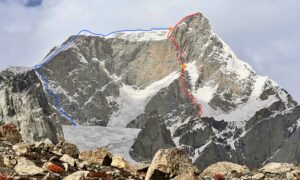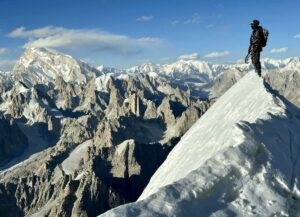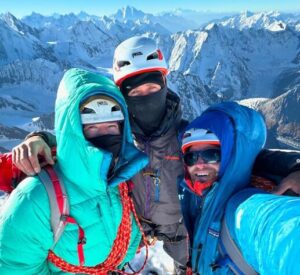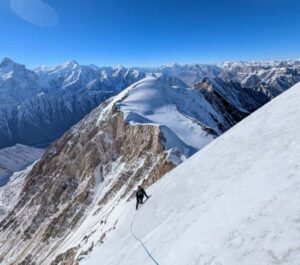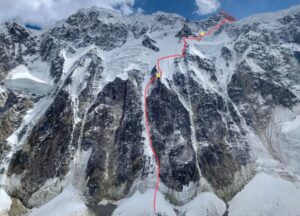Climbers on K2, Broad Peak, and Nanga Parbat agree the main danger this year is the lack of snow and the constant rockfall, caused by extremely dry and warm weather.
Down in the valley, even mountain villages are approaching record temperatures of nearly 50º.
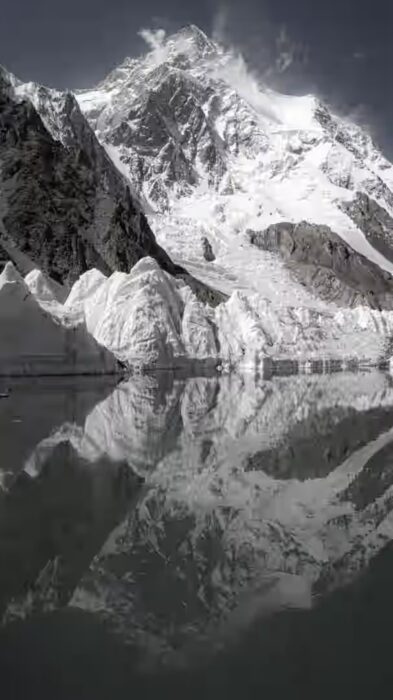
Glacial lakes have formed in front of K2. Photo: Mountain Professionals
Raining stones on K2
Serge Hardy of France reports that one of the many rocks falling on the route hit a Nepalese staff member in the leg. Camp 1 and the route to Camp 2 are almost completely on rock and experiencing significant rockfall.
Hardy planned to head to Camp 2 today.
On Broad Peak, climbers are acclimatizing by going up to Camp 2, which is also surprisingly dry.
“When your goal is an 8,000’er, you probably expect snowstorms, freezing temperatures, and avalanches,” reported Lukasz Supergan of Poland. “Since I arrived, hardly any snow has fallen. This means that parts of the route I would normally take through snow are now rocky and unstable. Climbing there is unpleasant and risky, as kilos of stones keep falling from underfoot.”
When not on rock, the climbers must progress on brittle ice where, according to Supergan, it is not possible to dig steps. Climbers have to use their crampons’ front points, which gets tiring.
To illustrate, Supergan posted a photo of Camp 2:
From summit to oven
Horia Colibasanu returned from the summit of Nanga Parbat looking forward to comfort and rest in Chilas village. Instead, he landed in what he described as an oven: a room with no air conditioning in 46ºC (115˚F) temperatures, although Horia said it felt like over 50º indoors. However, outdoors was not much better, due to the scorching wind. Chilas is at 1,250m above sea level.
“The wall was hot, and I couldn’t touch the bathroom counter with my wet palms…I took a shower with cold water from the mountain, it came out hot, and I instantly felt nauseous.”
Colibasanu has been climbing in Pakistan for years and says he had not experienced such heat since 1997, when he also suffered 47.7°C in July. In fact, July 17, 1997, registered the highest temperatures ever recorded in Gilgit Baltistan, until now. This record was broken on Saturday, one day before Colibasanu reached town.
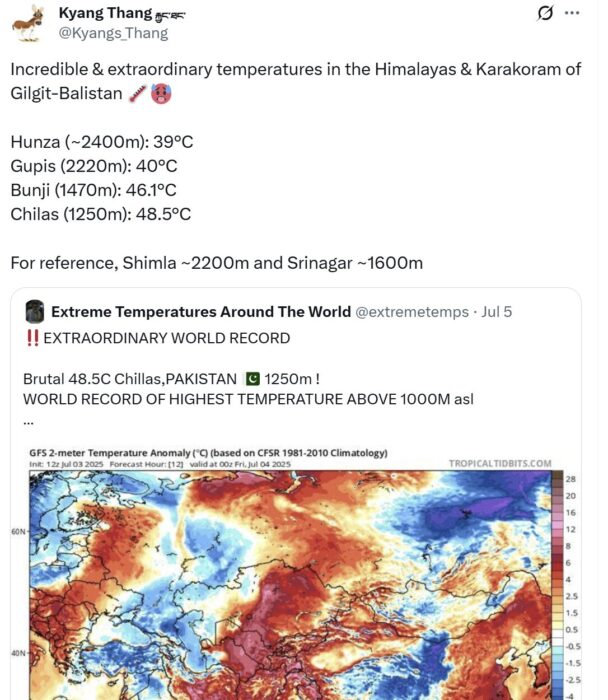
Photo: X
